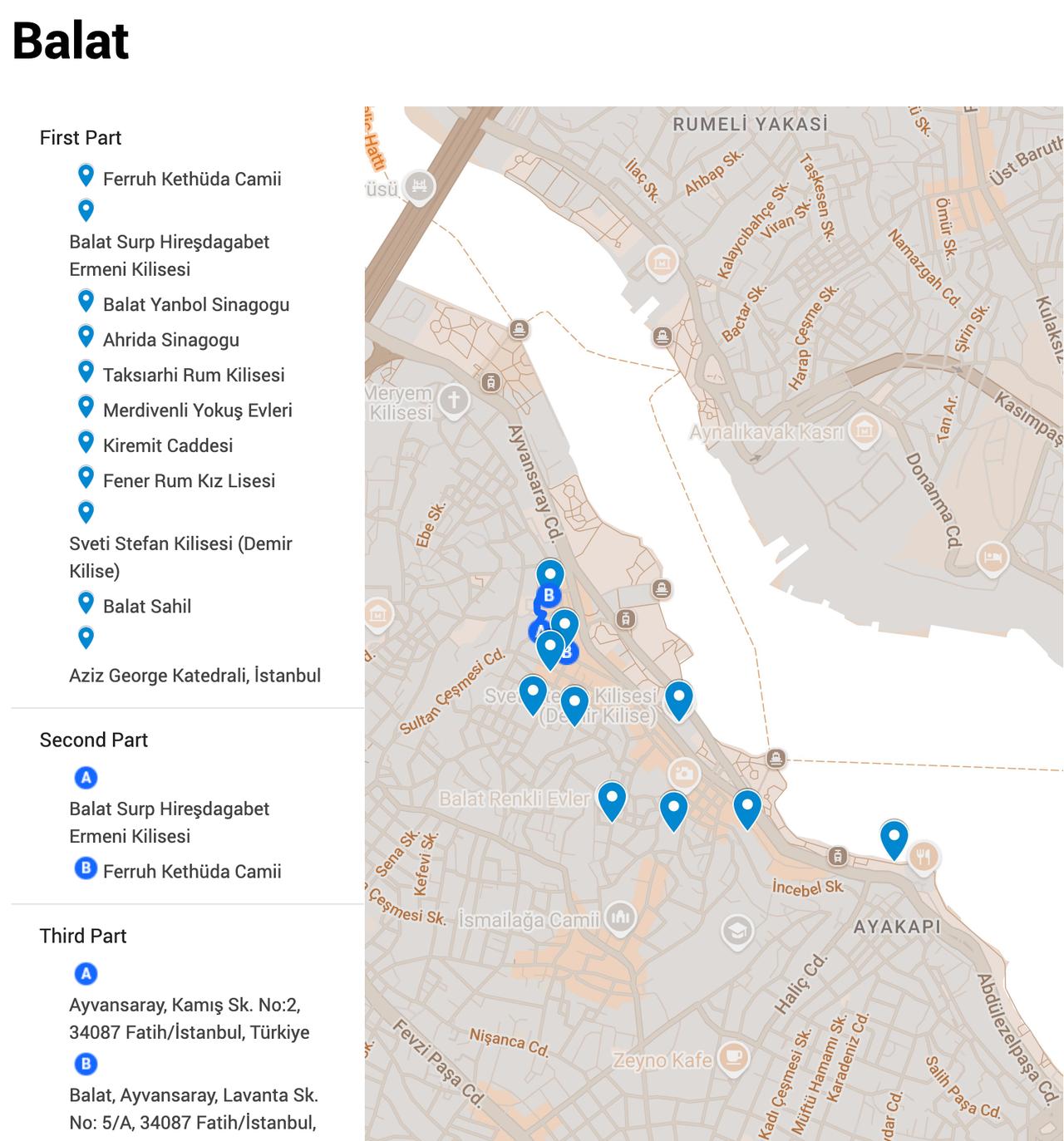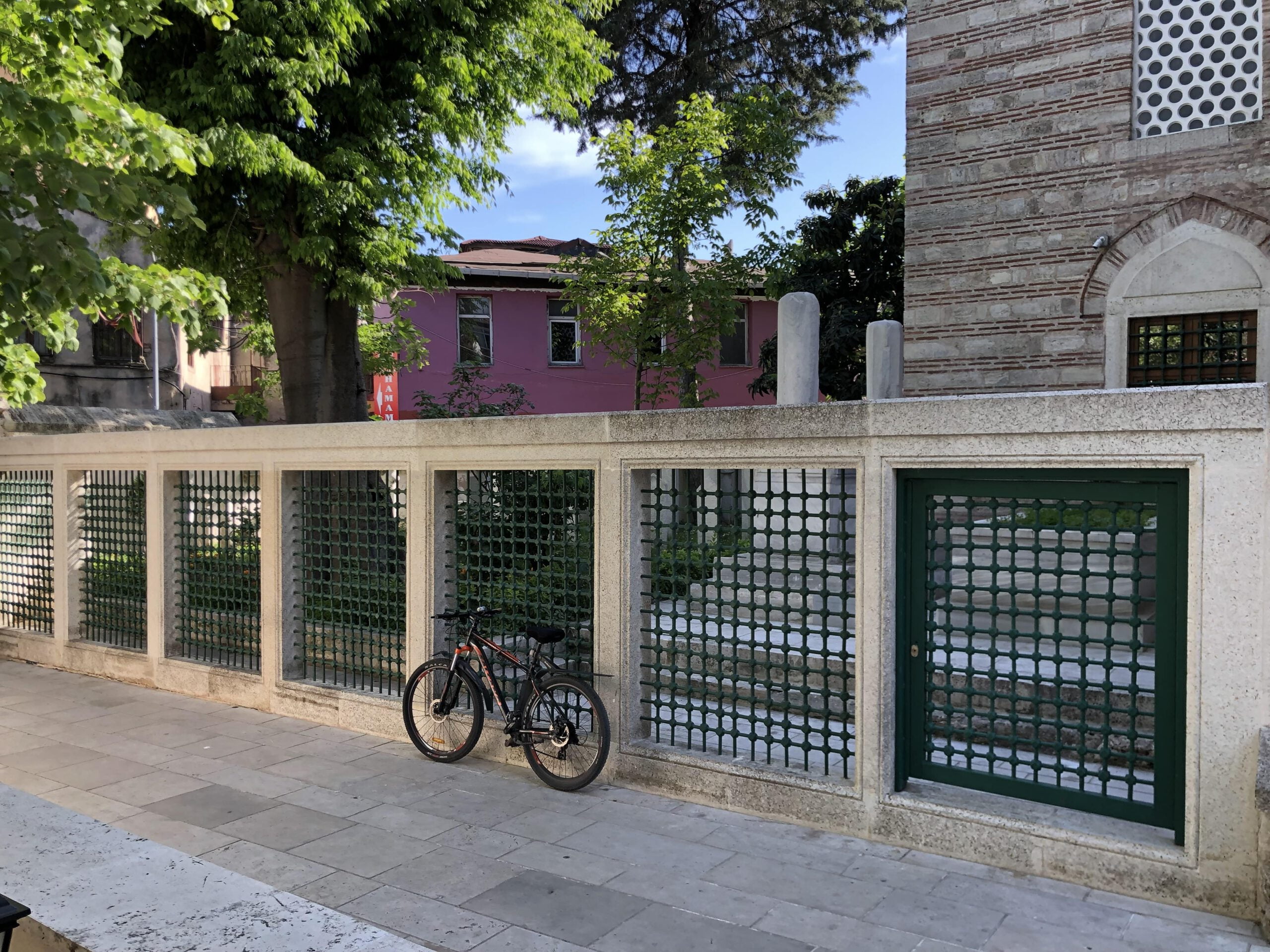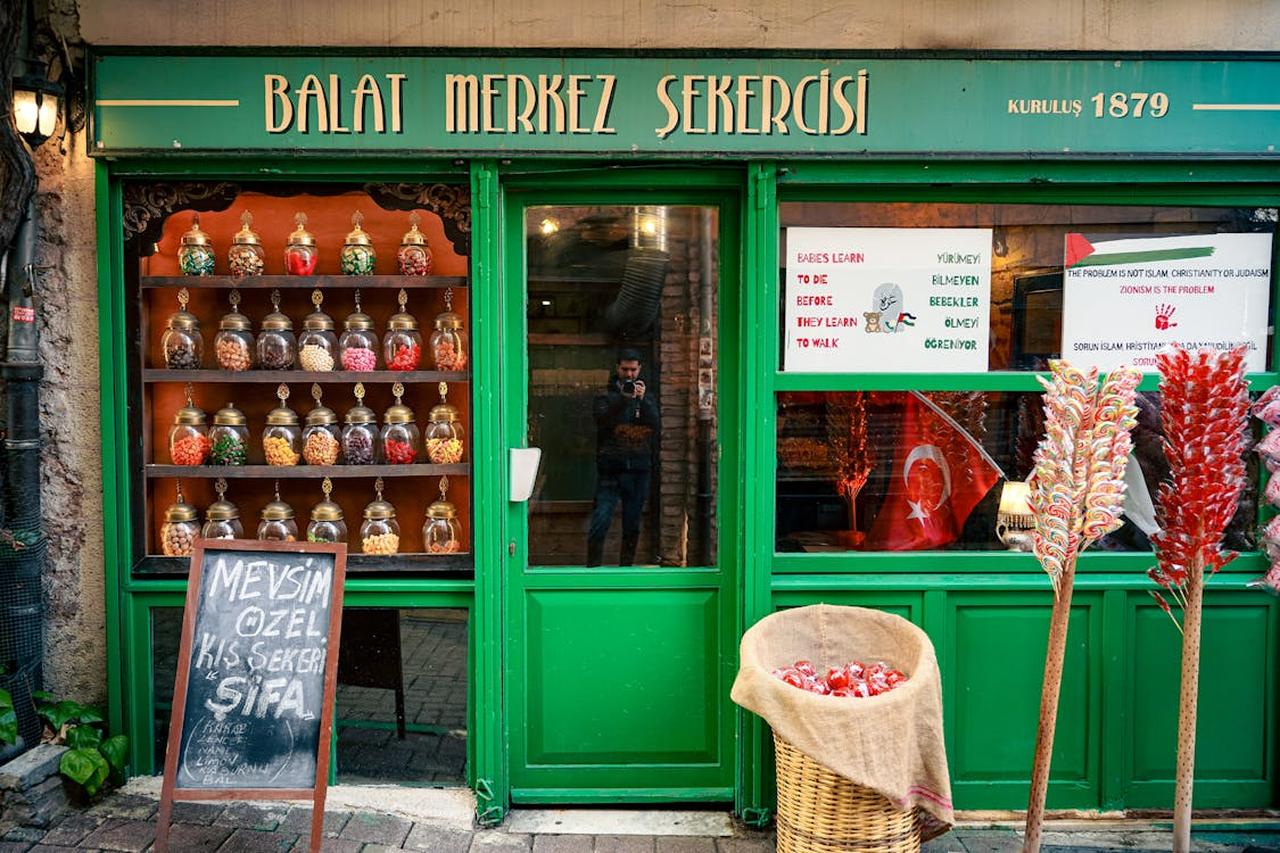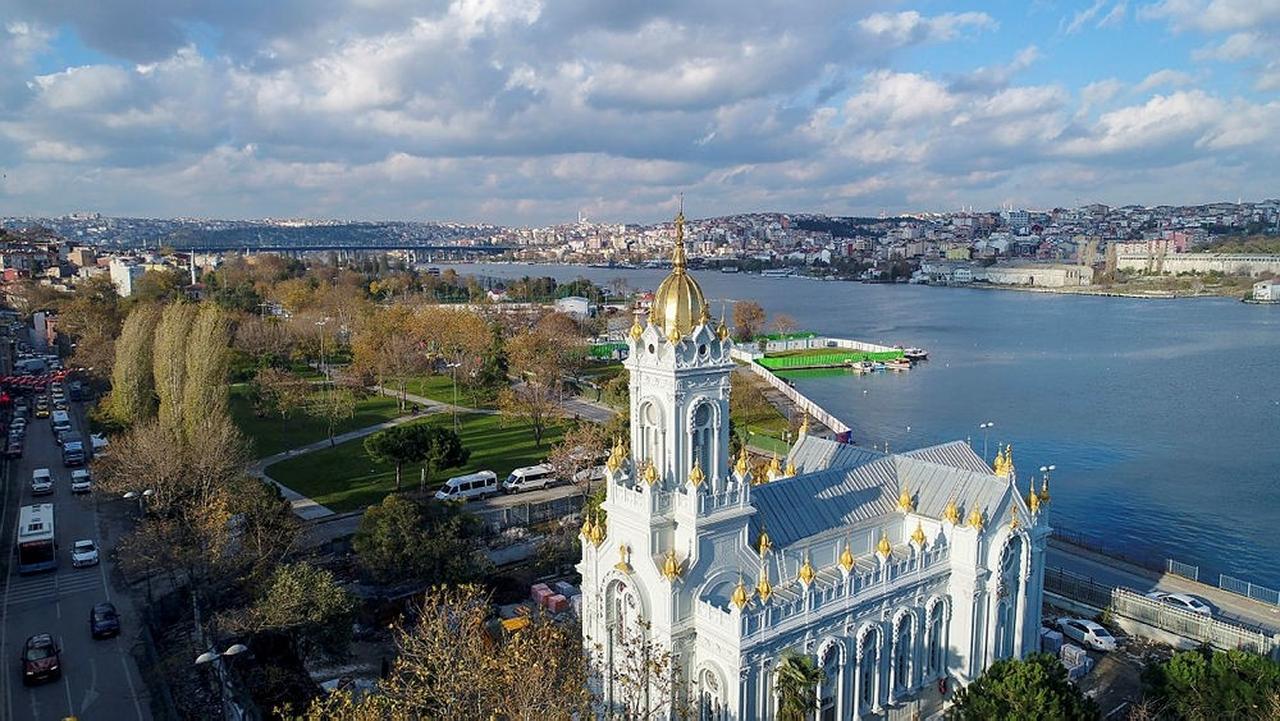
Balat, located along the shores of the Golden Horn in the district of Fatih, is one of Istanbul’s most distinctive neighborhoods. For the historian of religions, Balat is an open-air museum; but even for someone with no knowledge of history, the neighborhood’s landscape reveals layers of the past, woven together in a way anyone can see.
With its narrow streets, colorful houses, and hidden stories, the district preserves centuries of coexistence among Jews, Greeks, Armenians, and Muslims. This shared life has left its mark on synagogues, churches, mosques, and marketplaces that remain part of the urban fabric.
The neighborhood became well known after 1492, when Jews who had been forced to leave Spain made Balat their home. They started synagogues, schools, and shops that helped define the area. Today, walking through Balat means seeing colorful buildings and feeling the history shared by many different communities.

On Leblebiciler Street, visitors come across Cifit Carsisi, a market that seems unchanged by time. Antique shops, hardware stores, sweet shops, and second-hand sellers all sit close together, creating a busy scene that has its own charm.
The Turkish saying “like a Cifit Carsisi,” meaning a place of chaos, originates here. In Ottoman times, Jewish merchants played a central role in commerce, giving Balat a bustling, colorful atmosphere that still lingers in the market’s rhythm today.

Behind a simple doorway on Kurkcu Cesmesi Street, the Ahrida Synagogue surprises visitors with its beautiful interior. The pulpit looks like the front of a ship, which some say stands for the boats that brought Sephardic Jews here, or maybe even Noah’s Ark.
Entry requires prior permission from the Chief Rabbinate of Türkiye, but even standing at the entrance gives a sense of the community’s enduring presence.
A short walk from Ahrida lies the Yanbol Synagogue. Its painted ceilings depicting natural landscapes make the space feel like an art gallery. In 2025, the exhibition “Forgotten Rooms” was hosted here, underlining the building’s role not only as a house of worship but also as a guardian of collective memory.

Hidden among Balat’s winding streets, the Ferruh Kethuda Mosque is a peaceful spot with a courtyard and fountain. It was once a lodge before it became a mosque, and for years it has been a quiet place for people to rest and reflect, showing how Balat’s history has changed over time.
With its pink facade and vivid stained-glass windows, the Surp Hresdagabet Armenian Church is both welcoming and steeped in tradition. Dedicated to Archangels Michael and Gabriel, it is known as the “Church of Miracles.” Each September, a special liturgy draws worshippers who believe the service brings healing and hope.
Standing on Ayan Avenue, the Taxiarchis Greek Orthodox Church has survived several fires to rise again. Its courtyard is home to sacred springs, one said to have been opened by Archangel Michael’s spear. Local belief holds that those who pass through the courtyard’s stone hole receive healing and answered prayers.
Sitting on top of a hill, the Fener Greek Orthodox High School stands out with its red-brick walls, which is why people call it the “Red School.” Built in the 1800s, it is still one of the area’s most famous landmarks, known for its impressive building and long history of education.
Near the waterfront, the Fener Greek Orthodox Patriarchate serves as the spiritual center of global Orthodoxy. Behind its imposing iron gates, the Aya Yorgi Church displays mosaics, icons, and sacred relics that trace centuries of Christian devotion. It remains a living bridge between Byzantine heritage and contemporary faith.

Kiremit Street is the most photographed place in Balat. Brightly painted houses with bay windows and soft colors line the steep steps. These homes are popular with photographers and visitors who want to see daily life in one of Istanbul’s most colorful neighborhoods.

Every Wednesday, Balat turns into a big market. The Carsamba (Wednesday) Bazaar fills the streets with fresh fruits and vegetables, spices, fabrics, and street food. The busy sounds and lively crowds show the city’s daily life and long history of trading.
Merdivenli Yokus, which means “sloped stairway,” is another well-known spot in Balat. Its stone steps and colorful buildings make it a favorite place for photos. Many people stop here to take pictures and enjoy the unique feel of the neighborhood.

On the banks of the Golden Horn, you’ll find the Sveti Stefan Bulgarian Church, which is one of the only churches in the world made completely of cast iron. Built in the 1800s, it has detailed icons and stained glass that show both the skill of its builders and the area’s mix of cultures.
Finishing the day by the water in Balat is peaceful. You can hear the seagulls, see the water shine, and look across to the other side. It’s a reminder that Istanbul is full of contrasts, shaped by its history, faith, and memories.
Balat is more than a part of Istanbul; it’s a timeline walking through history, representing the best of its era. Each gate, market, and place of worship tells a piece of the city’s multicultural story. Exploring its streets means discovering the shared past that still shapes Istanbul.